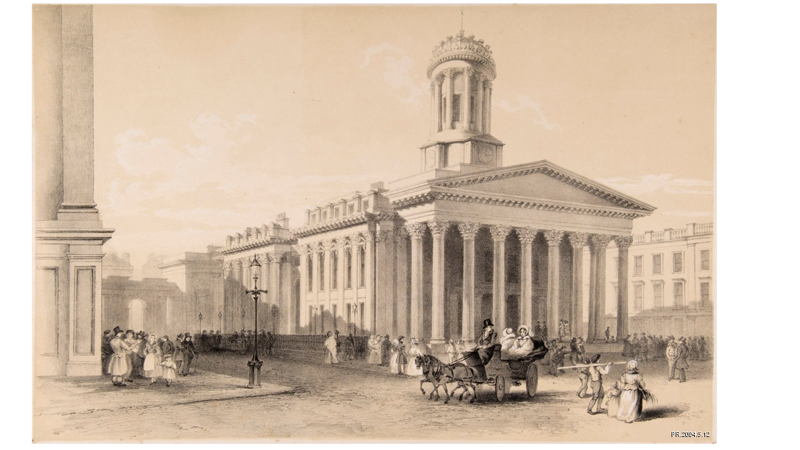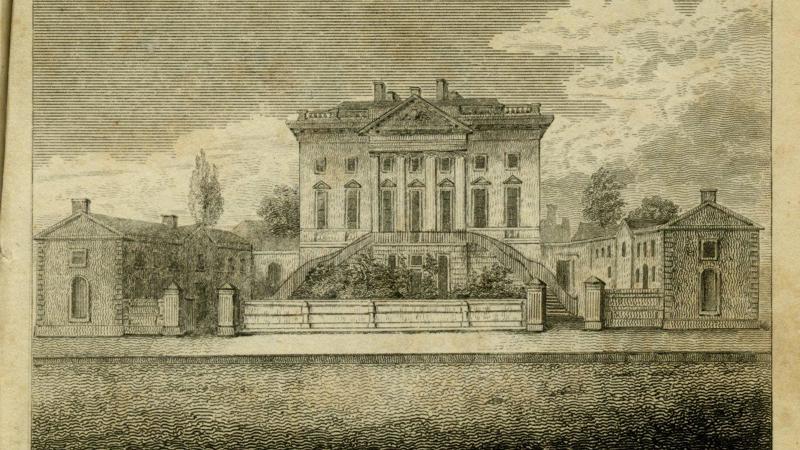The Cunninghame Mansion

The Cunninghame Mansion
PR.2004.5.12
Images © CSG CIC Glasgow Museums Collection
14th August 2018
The building housing Glasgow’s Gallery of Modern Art (GoMA) started out as a mansion for the tobacco and sugar merchant William Cunninghame of Lainshaw (1731–1799). The plot of land on Queen Street where the Gallery stands was once agricultural ground on Glasgow’s western frontier. Construction of the small but impressive mansion house started in 1777. The house had a sunk storey for kitchens, and two upper floors. On the first floor was Cunninghame’s drawing room and above this was his bedroom. Like his neighbours and fellow businessmen, John Glassford and Alexander Speirs, Cunninghame conducted his business from his Glasgow mansion, but resided at leisure in his country estate at Lainshaw near Stewarton.
Cunninghame had ties with slavery through his own interest in American tobacco, and in later years, Caribbean sugar. As a young man he had lived and worked in America and for a decade represented leading Glaswegian tobacco merchants and then his own business. He knew the importance of the trade in enslaved people to their business, and that the enslaved produced the products through which he and other Glasgow businessmen made their fortunes. Like Glasgow’s other merchant mansions, his house symbolized a business empire founded on slavery.
Glasgow’s Georgian New Town developed as a business quarter. New streets, squares and bridges were names after merchants, monarchy and places involved in transatlantic trade, giving us Virginia Street, Queen Street, Jamaica Bridge and Buchanan Street. However, as the New Town developed the mansions that Cunninghame, Glassford and Speirs owned were soon surrounded by properties. In 1789 Cunninghame decided to sell his house to John Stirling, who lived there until 1817.
Stirling then sold the house to the Royal Bank of Scotland, which added a double staircase entrance to the first floor and converted the drawing room into the tellers’ room. It was the bank’s branch in Glasgow and signified the change in function of the site of the property from residential to commercial. The branch closed in 1827 when the Royal Bank of Scotland sold the building to subscribers to Glasgow’s Royal Exchange.

The Royal Bank of Scotland
from ‘Glasgow Delineated’ 1836
Through the scheme’s leader James Ewing of Strathleven, the building retained a link with slavery. Ewing himself was a slave owner with business interests and investments in Jamaican sugar. He had architect David Hamilton make radical changes to the building for the new Exchange, adding a portico, a great hall and cupola. In the Exchange, Glaswegian businessmen met to trade commodities including sugar and cotton, which were produced using enslaved labour.
Dr Anthony Lewis
Curator of Scottish History
